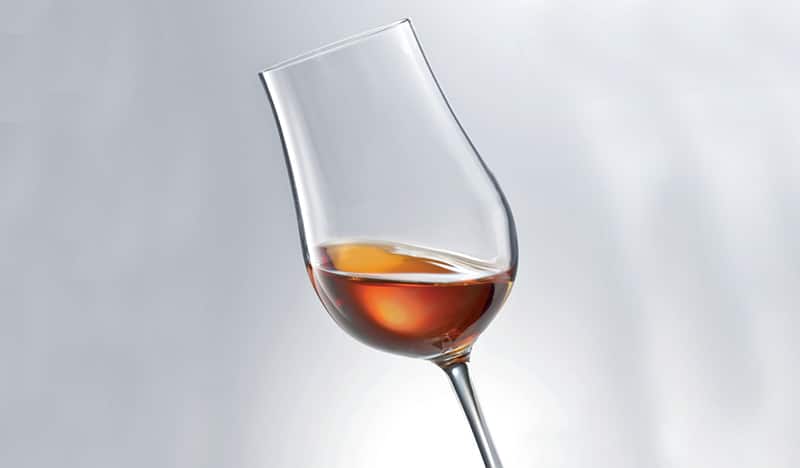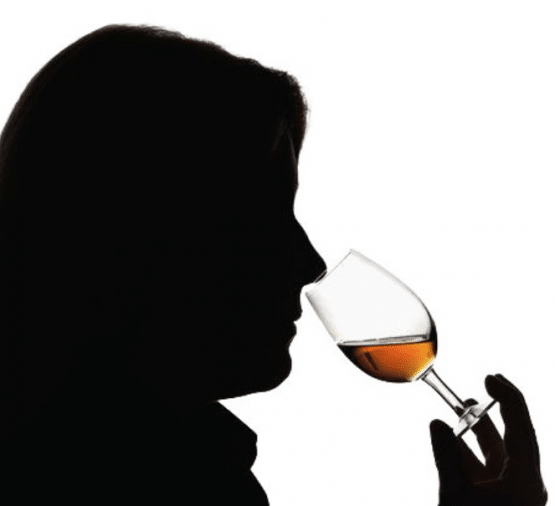FASE 2:
DURING THE SAMPLING

This is the highest expectations tasting part: glasses are in front of us, liquids are claiming our complete attention. The technical tasting is composed of three parts: nose (everything that can be perceived by smelling), mouth (when introducing a sip in the mouth), finish (spirit persistency when swallowed).
Nose: let us move the glass nearby to our nose. Thanks to the high alcoholic percentage, it is not necessary to rotate the glass to cover the internal part of the glass with the spirit, as for wine. At the same time, the high alcoholic percentage will prove to be tough to face: do not give up, and favor brief inspirations, without fully dipping the nose in the glass. Let us also try to use both the nostrils alternating them. In order to identify different aromas, our perfumes memory, associated to many different events in life, will help us: our job will consist in connecting these memories to something concrete to whom a name can be given. It is not by chance that we can reconnect to our past life as infants by perfumes, maybe unique ones which are not that easy to codify, since they relate to very personal experiences. Many different tastings experience will enrich the vocabulary, improving precision in the perfumes identification.
Let us start from a milestone: scents are not identical for everybody. We can not assume everybody to identify the same aromas in the same glass, mainly due to specific personal experiences. Talk to your tasting buddies and verify on important websites or by reviewing the manufacturer’s tasting notes. Sharing is very important during this phase. Compare the products we have in front of us: which one we like best, which one is the most complex and multi-faceted, which one is more or less appealing to us.
Palate: it is now time for the first sip. This is probably the most delicate moment of the tasting, since our mouth is generally not used to the high alcoholic percentage, and this may jeopardize the tasting. Initially a small sip, really a minor one. Leave the spirit in the mouth for a few seconds to then slowly swallow it. The liquid impact will be remarkable, however much less than with a generous sip. Eventually, if we are moving our first steps, we can dilute the spirit with water to decrease the alcoholic percentage, at least for our first tastings. Later on we will be able to more freely interact with the spirit, which means with more generous sips and longer time in the mouth without exaggerating. Spirits are not all identical, even when alcoholic percentage is similar: some are very powerful right at the beginning, others require some time to reach best performances: let our palate decide. The suggestion is however to swallow little sips, with no rush: tastings are not for cow-boys!
The sensations to the palate are also very important tasting components: here as well we need support from our memory in identifying main and secondary components, which may be given off few seconds later. Sensations can be different from one place to another of the mouth: from the tip to the rear part of the tongue, up to the edges of the mouth to the palate itself. Let us concentrate on these details, in order to obtain a full picture of the tasting product.
Finish: this part provides important info on product quality. Once swallowed, what remains in mouth and palate is the so-called “finish”, the remembering of the product. Persistency can be quite long, reaching hours; intensity varies from product to product.


